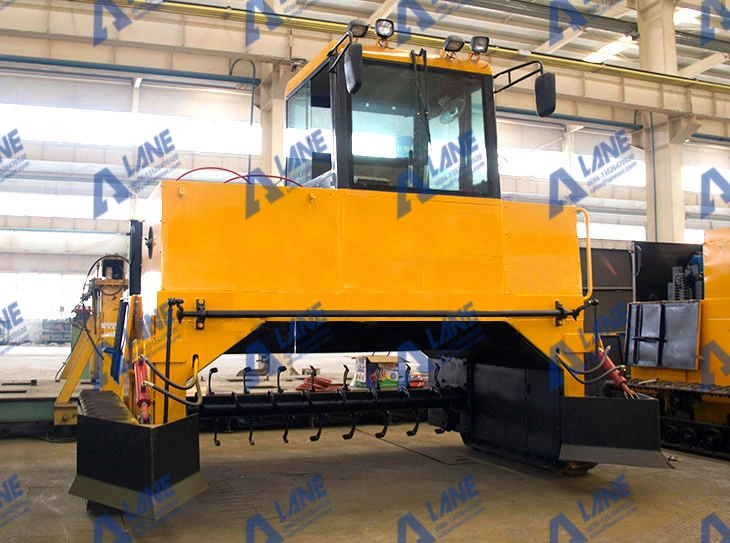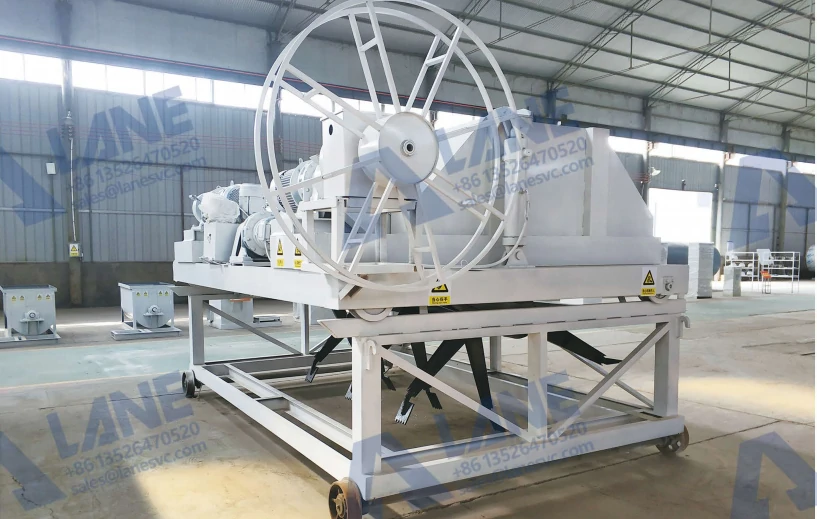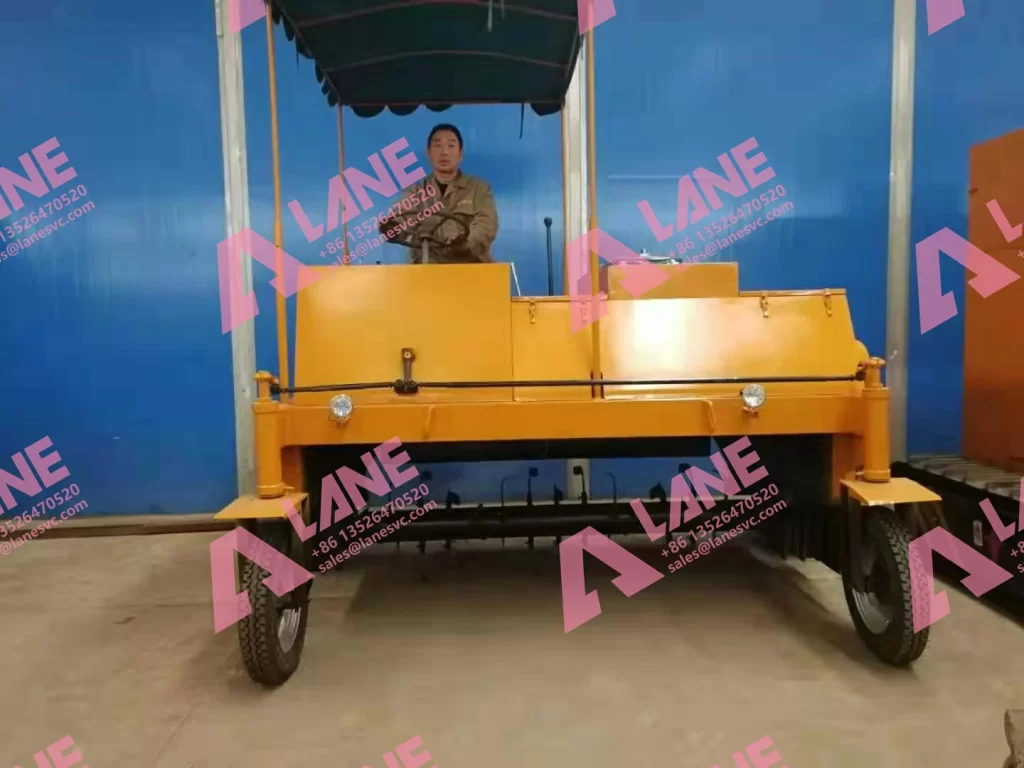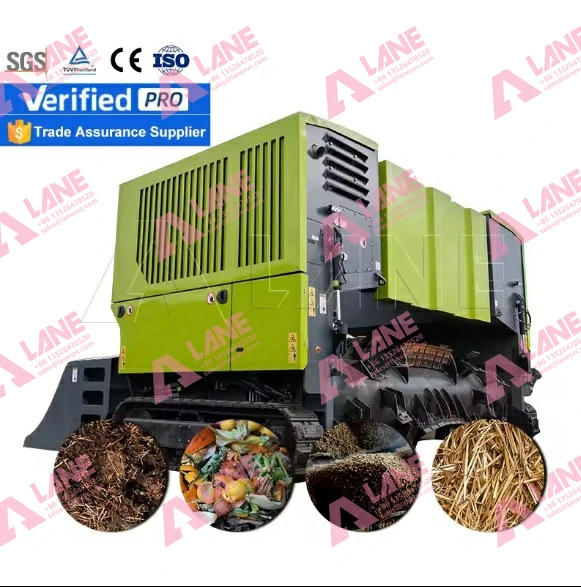Composting is one of the most effective methods for recycling organic waste and turning it into valuable organic fertilizer. However, efficient composting requires more than just piling up manure, crop residues, or green waste. Aeration, moisture control, and even mixing are crucial to ensure proper microbial activity and nutrient retention. This is where a low cost compost turner machine becomes an essential piece of equipment for farmers, cooperatives, and small-scale industries seeking affordable yet efficient composting solutions.
While large-scale industrial composting systems often involve high capital investment, the low cost compost turner machine provides a practical alternative. By combining affordability with efficiency, these machines make it possible for small and medium farms to produce high-quality compost without heavy financial burden.
Why Composting Matters
Before exploring the machine itself, it’s important to understand why composting plays such a central role in sustainable agriculture:
Nutrient Recycling: Transforms animal manure, crop residues, and kitchen waste into nutrient-rich compost.
Soil Health Improvement: Adds organic matter, enhances soil structure, and supports microbial diversity.
Pollution Control: Reduces greenhouse gas emissions and prevents water contamination caused by raw manure.
Cost Savings: Provides farmers with natural fertilizer, reducing reliance on expensive chemical fertilizers.
The low cost compost turner machine ensures that composting becomes more efficient and accessible, bridging the gap between traditional practices and modern requirements.
How a Low Cost Compost Turner Machine Works
A low cost compost turner machine is designed to aerate and mix compost piles while controlling temperature and moisture. The working principle is simple but effective:
Pile Formation – Organic waste materials are stacked into long windrows or placed inside composting grooves.
Turning Process – The machine moves along the pile, using rotating blades or paddles to lift, mix, and aerate the materials.
Aeration and Heat Control – By introducing oxygen, the turner accelerates microbial decomposition and maintains temperatures of 55–65°C, essential for killing pathogens and weed seeds.
Moisture Adjustment – Turning helps distribute water evenly throughout the pile, preventing dry or waterlogged zones.
Final Compost – After several weeks of regular turning, the compost becomes stable, dark, and nutrient-rich.
Even though the low cost compost turner machine has a simplified design compared to industrial models, it ensures that key composting conditions are met, resulting in high-quality organic fertilizer.
Types of Low Cost Compost Turner Machines
Not all compost turners are the same. Farmers can choose from different models of low cost compost turner machines depending on their budget, available land, and composting scale. Below are four of the most commonly used designs:
This model is one of the most popular among medium-sized farms. Equipped with crawler tracks, it can move steadily over long windrows in open fields. Its rotating blades efficiently lift and mix compost, ensuring oxygen reaches every layer. Despite its strong performance, it remains relatively affordable compared to large industrial machines. The crawler type compost turner is ideal for chicken manure, cow dung, and crop residues.

The groove type compost turner machine is designed for fermentation in concrete grooves. It runs on rails installed on both sides of the groove, with a turning device that mixes the compost inside. This model is particularly useful for farmers with limited land because it maximizes vertical space while maintaining efficient fermentation. Some groove turners can also be upgraded with automatic shifting and multi-groove operations, further improving efficiency.

The wheeled compost turner is compact and flexible, powered by wheels rather than tracks. Farmers or operators can drive it directly over windrows, making it easy to maneuver in smaller spaces. Its lightweight design keeps costs low, and its fuel consumption is minimal. This type of low cost compost turner machine is a favorite among small farms, educational institutions, or pilot composting projects.

4.Remote Control Crawler Compost Turner
For farmers looking for convenience, the remote control crawler compost turner offers modern features at a reasonable price. Operators can control the machine from a safe distance, reducing labor intensity and improving safety. It combines the strength of crawler-type turners with smart control, making it suitable for composting larger piles with reduced manpower. The automation also helps maintain consistent turning schedules, ensuring high-quality compost output.

Step-by-Step Composting with a Low Cost Compost Turner Machine
Operating a low cost compost turner machine follows a simple yet structured process. Each step contributes to turning raw waste into mature organic fertilizer:
Step 1: Raw Material Preparation
Farmers collect manure, crop straw, or food waste and adjust the carbon-to-nitrogen (C/N) ratio to about 25–30. If the material is too wet, an inclined dewatering machine is used. If it is too dry, water or fresh manure is added. Proper preparation ensures microbial activity begins quickly.
Step 2: Windrow or Groove Formation
Organic materials are then arranged into long windrows in open areas or placed inside fermentation grooves. The pile height is usually 1.2–1.5 meters for optimal aeration. At this stage, microbial inoculants can be added to accelerate composting.
Step 3: Turning with the Compost Turner Machine
The low cost compost turner machine is used every 2–3 days to mix the materials. The blades or paddles lift the compost, breaking up clumps and allowing oxygen to penetrate deep inside the pile. Turning also redistributes moisture, preventing dry spots and ensuring uniform fermentation.
Step 4: Monitoring Temperature and Moisture
During fermentation, compost temperature rises to 55–65°C. This thermophilic phase kills pathogens, insect eggs, and weed seeds. Farmers use simple thermometers and moisture meters to check conditions. If temperatures drop too early, additional turning or fresh material may be needed. If piles get too wet, dry crop residues are mixed in.
Step 5: Continued Fermentation and Regular Turning
Over 20–30 days, the compost pile undergoes repeated turning. Each cycle reduces odors and stabilizes the material. The frequency of turning depends on the machine type—crawler and wheeled turners handle long windrows, while groove turners automatically process piles in confined spaces.
Step 6: Maturation
As the compost stabilizes, temperatures gradually decline. The pile darkens, develops a crumbly texture, and carries an earthy smell. At this stage, the material is considered mature and safe for use.
Step 7: Post-Processing
The matured compost can be crushed, screened, and packaged. Some farmers apply it directly to their fields, while others sell it in bags as a commercial product. The low cost compost turner machine ensures the final product is consistent and market-ready.
Advantages of a Low Cost Compost Turner Machine
Affordability – Significantly lower investment compared to large industrial machines.
Accessibility – Allows small farms and cooperatives to adopt modern composting practices.
Efficiency – Improves aeration, accelerates composting cycles, and ensures even fermentation.
Flexibility – Works with various raw materials including chicken manure, cow dung, pig manure, crop residues, and municipal waste.
Environmental Benefits – Prevents open dumping of manure and reduces methane emissions.
Case Example 1: Poultry Farmers in the Philippines
A group of poultry farmers in Luzon faced challenges managing chicken manure, which created odor issues and complaints from nearby communities. They invested in a low cost compost turner machine designed for windrow composting. Within weeks, the manure was transformed into high-quality compost, used directly on vegetable fields. The machine not only solved waste management problems but also provided farmers with a steady supply of organic fertilizer.
Case Example 2: Smallholder Cooperative in Kenya
In Kenya, a cooperative of smallholder farmers pooled resources to purchase a low cost compost turner machine. Previously, they relied on manual turning, which was time-consuming and inconsistent. The machine enabled them to process manure and crop residues more effectively, producing compost faster and in greater volumes. The compost was then packaged and sold in local markets, creating additional income for the cooperative.
Challenges and Practical Solutions
Limited Turning Capacity: Low cost machines may have smaller capacity. Solution: Operate multiple passes or expand gradually with larger models.
Manual Monitoring: Simplified machines lack advanced sensors. Solution: Farmers can use simple thermometers and moisture meters for control.
Initial Awareness: Farmers may be unaware of the benefits. Solution: Demonstration projects and training programs promote adoption.
Economic and Environmental Impact
The adoption of a low cost compost turner machine has measurable impacts:
Economic: Reduces the expense of chemical fertilizers, generates new revenue from compost sales, and improves crop yields.
Environmental: Minimizes waste-related pollution, prevents nutrient runoff, and lowers greenhouse gas emissions.
Social: Enhances community health by reducing odor, flies, and water contamination from untreated waste.
Innovation and Future Trends
The future of the low cost compost turner machine is tied to ongoing innovations in affordable agricultural machinery. Manufacturers are introducing lightweight designs, energy-efficient motors, and hybrid options powered by renewable energy.
Integration with digital farming tools is also emerging. Even low-cost models are beginning to adopt simple monitoring systems that allow farmers to track compost temperature and moisture via mobile apps. This blend of affordability and smart technology will ensure that composting remains accessible to all levels of farmers.
The compost turner machine represents a breakthrough for sustainable agriculture by making composting technology accessible to small and medium-scale farmers. It balances affordability with efficiency, helping transform animal manure and crop residues into valuable organic fertilizer.
From poultry farms in the Philippines to cooperatives in Kenya, success stories highlight how these machines solve waste management challenges, improve soil health, and create economic opportunities. As technology continues to evolve, the low cost compost turner machine will play an increasingly vital role in the global transition toward sustainable and affordable farming practices.
For more details, please feel free to contact us.
Henan Lane Heavy Industry Machinery Technology Co., Ltd.
Email: sales@lanesvc.com
Contact number: +86 13526470520
Whatsapp: +86 13526470520